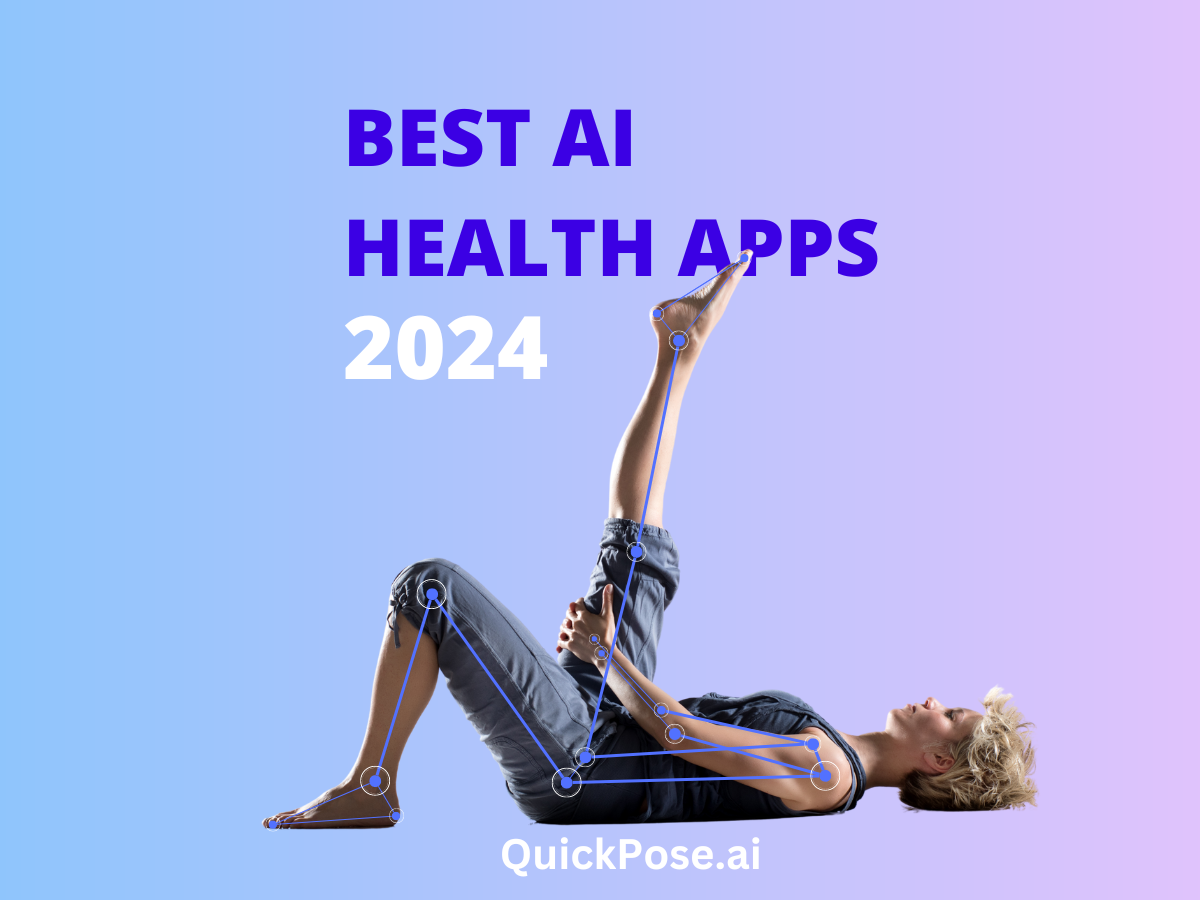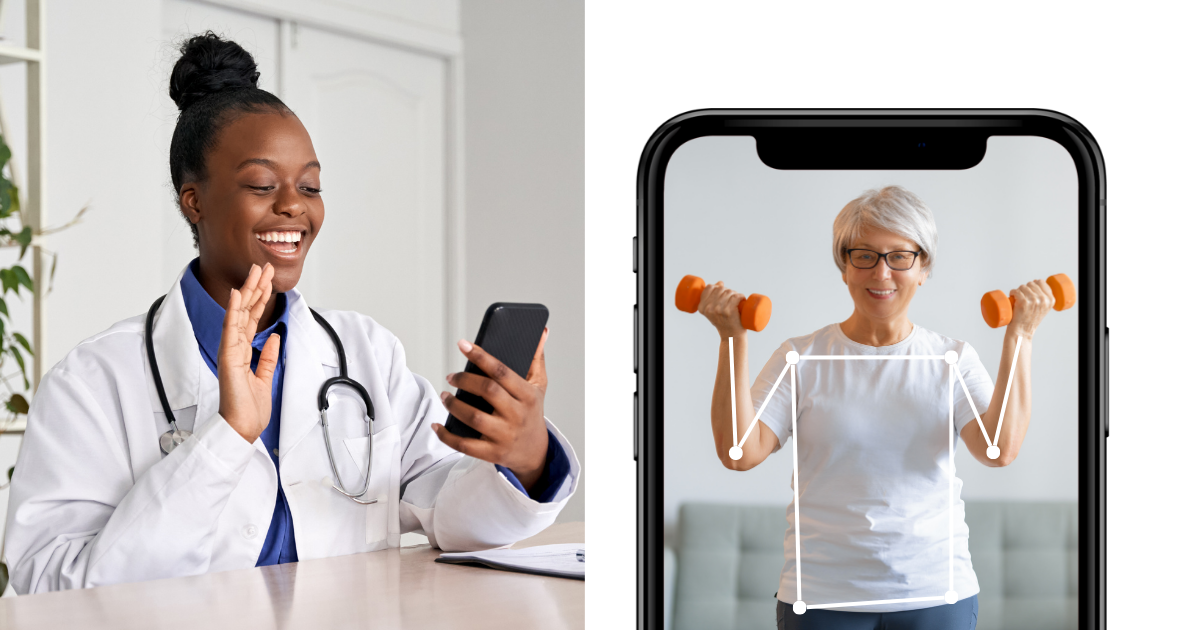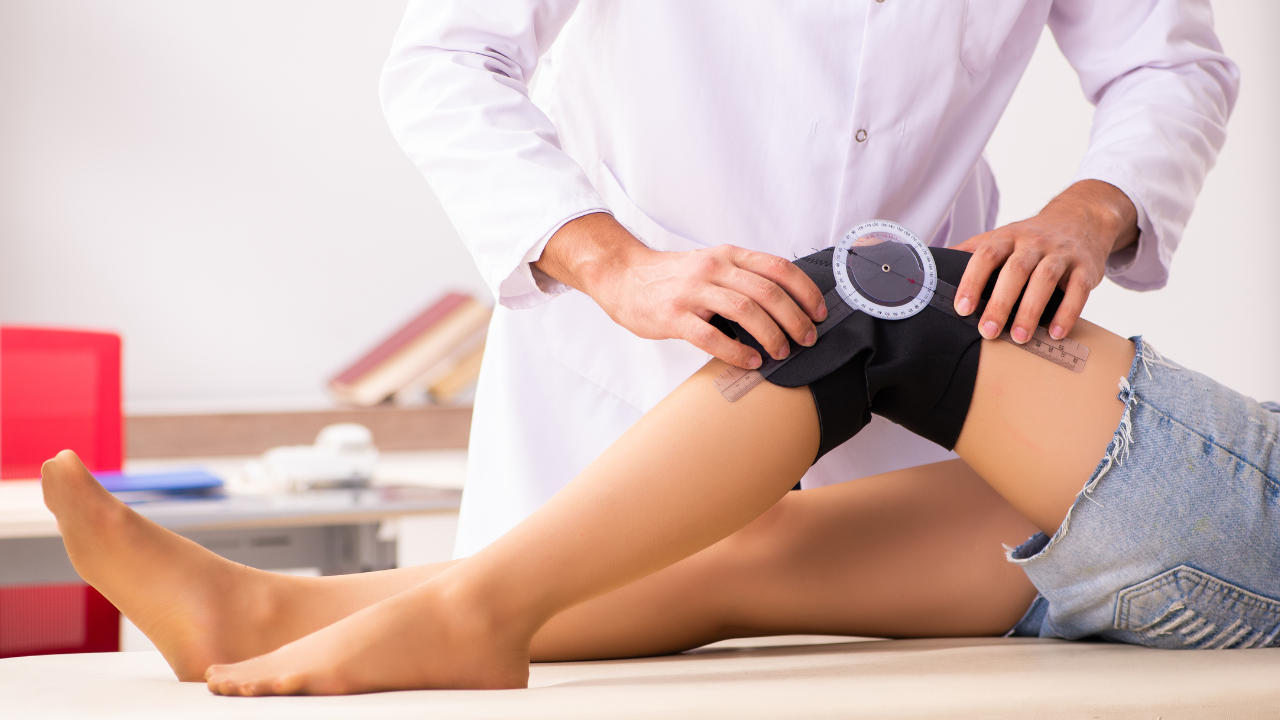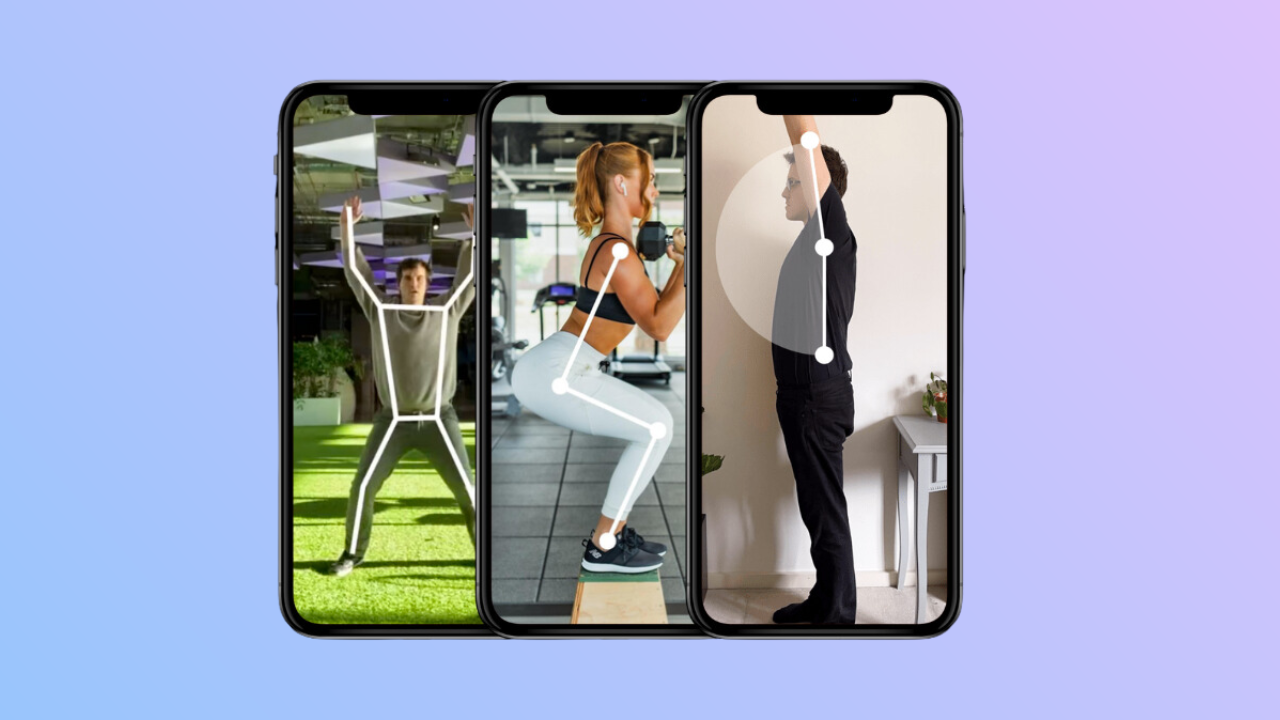In recent years, artificial intelligence (AI) has become increasingly prevalent in healthcare. One area that has gained attention is human Pose Estimation, which involves detecting and tracking the position and movement of a person’s body parts in real-time. This technology has a range of applications in healthcare, from rehabilitation and physical therapy to diagnosis and treatment of musculoskeletal conditions.
The emergence of pose estimation algorithms represents a potential paradigm shift in the study and assessment of human movement.
Stenum et al, 2021
If you’re a product manager in the health tech sector, you may be hesitant to explore human pose estimation AI due to concerns about complexity, development time, and cost. However, the benefits of this technology cannot be ignored, and with QuickPose, it’s easier than ever to integrate pose estimation into your apps.
In this blog post, we’ll explore the benefits of human pose estimation in healthcare, as well as common challenges in adding this technology to health tech apps. We’ll also introduce QuickPose, a solution that makes it quick and easy for developers to integrate pose estimation into their projects.
So, what are the benefits of Human Pose Estimation in Health care, and how can we get this technology into the hands of those who will make a difference? Let’s dive in.
6 Benefits of Human Pose Estimation in Health Care:
More accurate assessment of body posture and motion
Human pose estimation can help healthcare providers more accurately assess a patient’s body posture and motion. This is particularly important in the context of rehabilitation and physical therapy, where precise tracking of a patient’s movements can aid in developing personalized treatment plans and monitoring progress over time. By using AI-powered pose estimation, healthcare professionals can obtain more objective and consistent assessments of patients’ movements, leading to improved outcomes. Additionally, pose estimation can assist in the diagnosis of musculoskeletal conditions and diseases, such as Parkinson’s or multiple sclerosis, by providing more precise data on patients’ movements and postures.
Reduced need for manual physical assessments by healthcare professionals
Using human pose estimation in healthcare is that it can reduce the need for manual physical assessments by healthcare professionals. Traditional physical assessments can be time-consuming, costly, and may not provide accurate and objective data. With pose estimation technology, however, healthcare professionals can obtain precise data on patients’ movements and postures without needing to perform manual assessments. This can lead to increased efficiency, reduced costs, and improved accuracy in diagnoses and treatment plans. Additionally, pose estimation technology can be used remotely, allowing healthcare providers to monitor patients’ progress from a distance, which can be particularly useful in telehealth settings or in situations where in-person assessments are not possible.
Get Access to Our TestFlight Demo
Check out QuickPose iOS SDK abilities in our TestFlight Demo app.
Ability to detect subtle changes in patients’ postures or motions which may indicate the presence of medical conditions
One of the key benefits of using human pose estimation in healthcare is the technology’s ability to detect subtle changes in a patient’s postures or motions that may indicate the presence of medical conditions. For instance, if a patient has Parkinson’s disease, they may exhibit subtle tremors or changes in gait that can be difficult to detect with the naked eye. With pose estimation technology, healthcare providers can obtain precise data on these changes, which can aid in early detection and more accurate diagnoses. By detecting these changes early on, healthcare providers can develop personalized treatment plans and optimize rehabilitation outcomes for patients.
Greater accuracy in diagnosing medical conditions
In addition to assisting healthcare professionals in tracking patients’ movements and postures, human pose estimation can also contribute to greater accuracy in diagnosing medical conditions. Machine learning algorithms can be trained on large datasets of global patient data, enabling the identification of patterns in patients’ movements that may indicate the presence of specific medical conditions. For example, these algorithms may detect abnormal walking patterns in patients with knee injuries or detect changes in posture that are indicative of spinal disorders. By providing more accurate diagnoses, pose estimation technology can help healthcare professionals develop personalized treatment plans and optimize rehabilitation outcomes for patients. Overall, the combination of human pose estimation and machine learning can revolutionize the way healthcare providers diagnose and treat a wide range of medical conditions.
Improved ability to monitor patients remotely over long distances
Human pose estimation technology can also improve the ability of healthcare providers to monitor patients remotely over long distances. With the rise of telehealth and remote patient monitoring, pose estimation technology can provide healthcare professionals with precise and objective data on patients’ movements and postures, regardless of their location. This can be particularly useful in situations where patients are unable to travel to a healthcare facility or where in-person monitoring is not possible. Additionally, the use of pose estimation technology can be easily scaled to accommodate large numbers of patients, making it a valuable tool for healthcare providers looking to improve their remote monitoring capabilities. By providing healthcare professionals with more accurate and objective data on patients’ movements and postures, pose estimation technology can help improve patient outcomes, reduce healthcare costs, and enhance the overall quality of care provided.
Faster response times when detecting signs of distress in hospitalized or elderly patient populations
Another important benefit of using human pose estimation technology in healthcare is its ability to detect signs of distress in hospitalized or elderly patient populations quickly. By continuously monitoring patients’ movements and postures, pose estimation technology can detect subtle changes in patients’ behavior that may indicate a fall or other medical emergency. This can be particularly useful in hospital settings or in elderly care facilities, where rapid response times can be critical. By enabling healthcare providers to respond more quickly to signs of distress, pose estimation technology can help improve patient outcomes and reduce the risk of complications. Additionally, the use of pose estimation technology can help alleviate the workload of healthcare professionals, allowing them to focus on providing quality care to their patients.
Challenges of Adding Pose Estimation into Health Tech Apps
Despite the many benefits of adding pose estimation technology into healthcare apps, some product managers may still feel hesitant about implementing this technology. Here are some of the common challenges that may be encountered, along with strategies for overcoming them:
Technical expertise:
One of the main challenges in adding pose estimation technology into health tech apps is the need for technical expertise. Many product managers may not have experience in machine learning or computer vision, which are necessary for implementing pose estimation technology. To overcome this challenge, product managers can consider partnering with companies that specialize in pose estimation technology, such as QuickPose, which offers an SDK and API that makes it easy to integrate pose estimation into any app.
Data privacy and security:
Another challenge to implementing pose estimation technology is ensuring data privacy and security. Healthcare data is highly sensitive and must be protected in accordance with strict regulations. To address this challenge, product managers should work with companies that have experience in handling sensitive healthcare data and adhere to data privacy and security best practices.
Cost:
Implementing pose estimation technology can also come with a significant cost. However, product managers should consider the long-term benefits of the technology, including improved patient outcomes, reduced healthcare costs, and increased efficiency. Additionally, partnering with companies like QuickPose, which offer affordable and customizable solutions, can help mitigate the cost of implementing pose estimation technology.
User adoption:
Finally, product managers may face challenges in user adoption, as healthcare providers may be hesitant to adopt new technologies. To address this challenge, product managers can provide education and training on the benefits of pose estimation technology and emphasize the ease of use and integration with existing workflows.
By addressing these challenges, product managers can successfully implement pose estimation technology into their health tech apps and realize the many benefits of this innovative technology.





